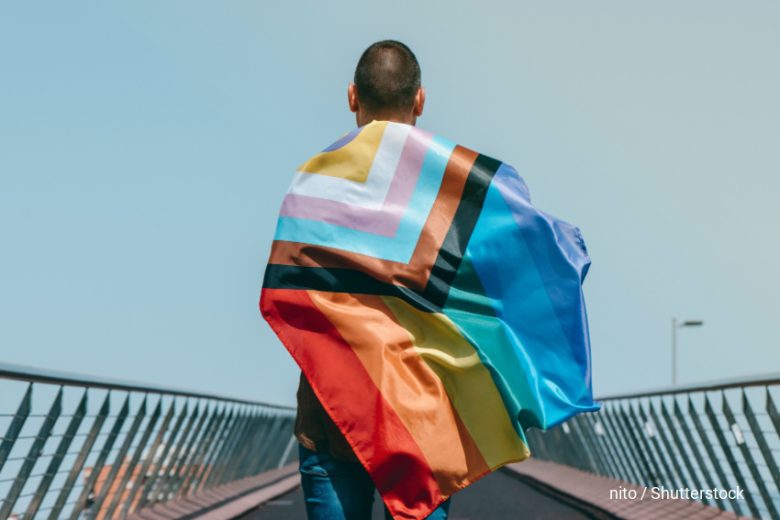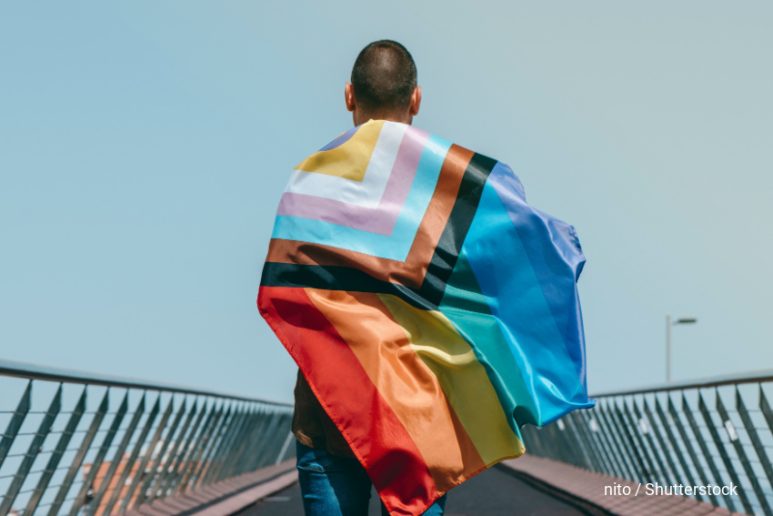By Alessandra Vescio
While the British LGBTI community was still mourning the death of Brianna Ghey, a 16-year-old transgender girl found stabbed in a park, and accusing the media of writing intrusive, brutal and offensive articles about her, a new report warned of a growing hatred against LGBTI people in the UK.
An Annual Review, conducted by ILGA-Europe, found anti- LGBTI and particularly anti-trans speech continued to increase and cause harm in 2022, and the media contributed to this with hostile reporting.

ILGA-Europe highlighted several examples, including the attack on Mermaids, a charity that supports gender-diverse children and young people and was subjected to what then Chief Executive Susie Green called a “campaign of misinformation and hate” that began with some misleading articles, and the decision of two trans journalists Freddy McConnell and Vic Parsons to leave the Guardian’s Pride coverage because of the newspaper’s “trans-hostile and exclusionary stance”, as they described it.
Hate speech and violence
As revealed by several organisations, including ILGA-Europe, there is a close correlation between the increase in hate speech on social and mainstream media and the rise in hate crimes and violence against LGBTI people. For instance, online abuse is one of the most common forms of violence LGBTI people experience in the UK, and the increase of hate crimes against transgender people recorded between March 2021 and March 2022 may be due to heated debates on social media. In addition, almost all transgender people surveyed in 2021 by TransActual, an organisation that works to support and improve transgender people’s lives, said they experienced transphobia on social media and witnessed it in the media. Many of them also stated that the transphobic rhetoric in the media had an impact on their daily lives and how they were treated by strangers on the street, family members, colleagues, and friends.
“We have been demonised in the media and media is skewed against us,” Director of Transactual and Chair of Trans Media Watch jane fae told MDI.
“We (Trans Media Watch) have been monitoring media stories for over a decade since 2012, and in that year, we picked up in the UK approximately 60 trans-related stories. Last year, there were over 6,000. In ten years, the media obsession has gone from 60 to 6,000,” said fae.
“The majority of the stories are hostile. In those, anti-trans comments are given a place in about three quarters of cases and supportive comments in about 50%, but of that supportive comments only about one in ten come from trans people.”
The rise of trans-related articles in British newspapers was also recorded by IPSO. Research commissioned by the press regulator found a 400% increase in the coverage of trans-related stories between 2009 and 2019. While the research found a more respectful language and terminology being adopted, a “more heated debate and sometimes a more strident tone” were identified in articles about policies and laws, like the reform of the Gender Recognition Act. One of the most common topics against it was the impact on children.
As the political activist Christine Burns explained in Freddie McConnell’s documentary ‘Lives on the Line’, this is nothing new: “There are tremendous similarities between this and the anti-gay moral panic of the Eighties. They’re making the same argument that children aren’t safe because of this. That nobody’s safe in a changing room. If this is a formula, just scratch out the words, put a new word in, and that will do.”
While what ILGA-Europe called “instrumentalisation of children” has contributed to a “tone of fear and suspicion” that “is found all across the press and politically on the right and the left” in the UK, McConnell explained: “As a trans person, it feels inescapable and dehumanizing.”
And it’s dangerous.
Brian Finnegan, Director of Communications with ILGA-Europe, told MDI:
“For a number of years now, we’ve seen a direct connection between the increase in hatred on social media, and in some European countries’ traditional media, and violence directed against LGBTI people. This in turn has created a breeding ground for violence against LGBTI people in their daily lives. Anti-LGBTI hate speech validates violence, sending the message that it’s acceptable not to respect LGBTI people. Social media and traditional media play the role of channelling and amplifying these dangerous messages that have a real impact in our communities, as we’ve seen in our latest Annual Review.”
But what’s the aim of spreading dangerous messages? In fae’s opinion, in the UK it is a government strategy:
“We now have a government and their supported media that is committed to using distractions – immigration, transgender people, false narratives – to take the news spotlight from the economy and Brexit.” fae told MDI΄.
“It’s creating dangers, real or imagined, and then telling the country that they have people who can solve these dangers. And it might work because there’s a portion of people, again from the media, who actually read these narratives, and believe them.”
Speaking more broadly, Finnegan shared a similar idea:
“It is particularly dangerous when hateful rhetoric comes from public representatives, politicians, and religious leaders. In many cases they are using LGBTI people as scapegoats to divide society and conquer, thereby holding on to power. But their messages not only serve to divert attention from pressing problems or their own failures – they separate and isolate LGBTI people, giving wider society the underlying message that people who appear to be, or are identified as lesbian, gay, bisexual, trans or intersex are dangerous.”
That’s why something has to change. “I think there needs to be greater care about speech,” fae told MDI that keeping people who directly preach hate off social media is “a good idea”.
On the other hand, Finnegan urges a new approach by the media:
“There should be nuanced reporting in traditional media that looks at the reality of LGBTI lives and how they are being exploited.”
“Reality is complex, but the media tends to opt for simplistic headlines that serve as a basis to polarise people on societal issues, pitting one against the other as if there were two equal sides to the debate on whether one group of people should have equal human rights. There are not two equal sides to a story where one group is the perpetrator and the other is suffering,” Finnegan told MDI.
And there is no better way than being open and listening.
“In order to bring nuance to the table, journalists should seek out and listen to the stories of LGBTI people”, Finnegan explained.
“They should reach out to regional organisations for advice when reporting, and they should report on good news stories where LGBTI people positively affect society, rather than always painting LGBTI people as either dangerous or victims. While there are many stories about LGBTI people and the things that may shape their lives, there are risks in labelling LGBTI people as ‘other’ and presenting what happens to them as isolated events, detached from the bigger picture. What happens to LGBTI people impacts our societies at large and showcases the good or bad health of our democratic systems.”
Photo Credits: nito / Shutterstock

